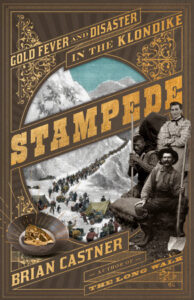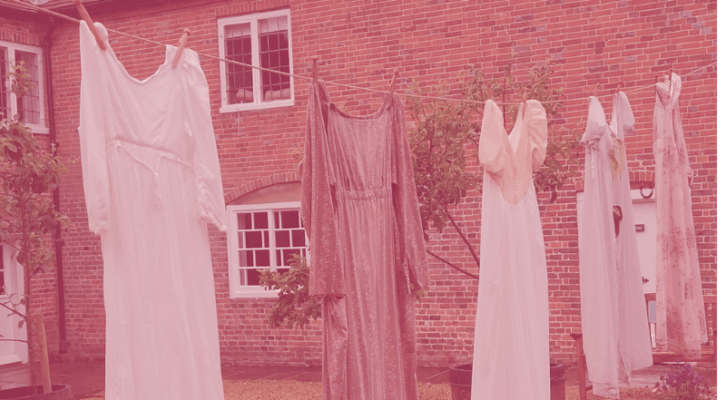America’s Gilded Age was always rotten at the core. Glittering estates and palaces of commerce for the Vanderbilts and the Carnegies, the squalid tenement and factory floor for the masses. Two entire generations of workers had been sacrificed to that grinder to make the Rockefellers rich. But when the gleaming veneer cracked, the whole system fell apart, and the country lapsed into a stupor like it had never known. The Panic of 1893 was the worst depression the United States had yet endured.
The railroads—the revolutionary technology of the age, and engine of overnight trade and communication—had been overvalued and overbuilt, growth fueled through acquisitions that hid inherent instability. Companies like Union Pacific were so big, no one thought they could fail, and yet one by one they crumbled. Over 150 railroads would go bankrupt by the end.
Entrepreneurs had borrowed heavily to fuel their expansions, but eventually the speculative financing imploded. Wall Street suddenly realized it was overleveraged and many companies’ paper worth far exceeded the reality. Bankers got spooked and stopped lending money, businesses of all kinds started to go broke, workers lost jobs, homeowners defaulted, and then the banks fell too. In 1893 alone, nearly six hundred banks and fifteen thousand businesses went bankrupt.
Those who lost their homes went west. They settled in Seattle, Portland, San Francisco, Los Angeles. They went west because Americans had always gone west for opportunity but this time they didn’t find any, because the Panic had hit the fragile new economies in Washington and California especially hard. Machines took jobs from skilled workers, as everything from shoes to wagon wheels was now made in factories. Global markets were increasingly tied together, and while business owners made record profits, real wages for average workers declined. Homes lost so much of their value that across the country mortgage debt far outstripped equity. The unemployment rate hit nearly 20 percent. A deep and wide depression took hold of the country and did not shake its grip for years.
When these pillars toppled, the public lost faith in institutions of all kinds. The Senate was so packed with the wealthy elite that it was known as the Millionaires Club. The politicians were seen as protectors of the monopolies, the banks, and the Wall Street magnates, and the gap between rich and poor was a widening chasm.
There was a great uprising. The movement was called Populism, and in their call to action they proclaimed that “The fruits of the toil of millions are boldly stolen to build up the colossal fortunes for a few.” William Jennings Bryan, their firebrand senator, crisscrossed the country, packing halls with the power of his oration, railing against businessmen and government inaction alike. The “soldiers” of Coxey’s Army—hundreds of out-of-work protesters demanding jobs—marched on Washington in 1894, and St. Louis and Baltimore were set ablaze by rioters after young men on union picket lines were shot in the streets by police.
The contrast between tycoons and tramps was embodied in the dual financial systems that existed simultaneously. The United States used two types of dollars, those backed by gold and those backed by silver. While the two should nominally have been worth the same, in practice there was one system for the rich and another for the poor. A gold dollar was worth more than a silver dollar. The government set a firm exchange rate of sixteen ounces of silver for one ounce of gold, but while silver was available widely, gold was scarce on commodity markets and in government treasuries. So for all practical purposes, a silver dollar was worth only 85 cents, and thus the rich hoarded the full-worth gold dollars for themselves, and left the cheap silver for everyone else.
When the Panic originally struck, the Congress and President Grover Cleveland moved to restore business confidence at the expense of workers. The Populists called corporations the root of the problem, acting as overlords and masters of the people, and said that Washington had sold out to J. P. Morgan and the rest of the Wall Street bankers, who only grew wealthier making personal loans to the government.
The old-time political machines and pundits got nervous, as the Populists gained in the polls. In a rebuke to the party establishment, the Populist hero Senator Bryan gained the Democratic nomination for president in 1896. In response, massive corporations like Standard Oil and the Chicago meatpackers funded William McKinley, the Republican nominee who promised to keep the strong gold dollar and impose high tariffs to protect American businesses. John D. Rockefeller and his fellow industrialists spent unprecedented millions of dollars in an effort to put their man in office.
It worked. The old line held. The Populists lost in the presidential election of 1896, and the depression dragged on.
In a last gasp America’s Gilded Age had finally come to an end. A subdued and burdened malaise smothered the nation. The country had lost hope. And the desperate poor seemingly powerless to change their fate.
And then, in July of 1897, the answer to all of America’s problems appeared on the front page of every newspaper in the country.
The papers said there was gold in the Klondike.
***
Tappan Adney was in New York City when he first saw the headlines like everyone else.
The front page of the July 18 edition of the New York Journal read: “TON AND A HALF MORE YUKON GOLD.”
More? How much was there before?
And then right below: “Second Treasure Ship Arrives from the Frozen Klondyke Placers.”
A second ship? What about the first? Adney and every other reader was missing out already, though on what he was not yet precisely sure.
Adney paid attention to headlines because he was a reporter, though a peculiar one. In truth, he was at heart a naturalist, inclined to spend weeks and months out-of-doors in remote wilderness, all to write stories of rugged adventure for genteel salon-bound readers back home. So this Klondike bit struck a nerve.
From then on Adney followed the stories, day by day, as did seemingly the whole country. William Randolph Hearst’s Journal and San Francisco Examiner had missed the initial wire reports of Clarence Berry’s disembarkation, and so for many weeks to come, they made up for that out-of-character lapse in sensationalism by trumpeting every bit of Klondike minutiae thereafter as if it were breaking news.
All that summer, the Journal had run depressing headlines: coal miners on strike, gas monopolies growing and raising prices, widespread economic collapse.
So what a jarring change on July 19 a dual deadline was. While the right side of the paper contained the same heartache Adney had read since the Panic—“2000 Strikers March: Bloodshed Is Feared”— the left side beamed hope: “Pacific Coast Is Gold Mad.” The lead column—“Miners Who Have Returned Predict Death and Starvation in Dawson City”—was classic Hearst, coy titillation wrapped in a dare.
The outlines of the story seemed simple enough. Recent returnees called the Klondike the richest goldfield ever discovered, “$70,000,000 in sight,” as if it was right there, lying on the ground. And it was all tenderfeet who hit the jackpot, lucky greenhorns who went north as a “last resort” and couldn’t help but succeed as the gold was “yards deep and yards wide.” Clarence Berry was listed as the richest of these prospectors, and when asked by reporters about the opportunity for others, he said: “Grit, perseverance and luck will probably reward a hard worker with a comfortable income for life.” The papers claimed Berry himself was now worth $135,000. The average man working at the standard 10-cent hourly wage would have to labor every day for two and a half centuries to make that kind of money.
Adney could feel it, this craze was different from California in 1849. There, in the Sierra Nevada, you needed a big crew and hydraulic pumps to wash away the side of the hill, to reach the little bit of hidden gold. This placer mining, on the other hand, seemed like a one-man job. Not for wages from a master, but to build something, on one’s own, by himself for himself. A man could become his own J. P. Morgan or Vanderbilt up there. Clarence Berry already had. Take a little journey and work hard and dig in the ground just a bit and you too could have what had been denied to the common man the whole Gilded Age.
And back in ’49, the whole rush to San Francisco was only partially about the gold anyway. Everyone seemed to want to go to fair paradisal California, take the land from Mexico and open the West. The gold just provided a good excuse and motivation to do it quick. No, this time the stories were different. No one dreamed of homesteading in Alaska. Enduring the faraway cold seemed like a small price to pay, though, to pick up all that gold just lying there.
And magnifying it all, a modern invention. “Nowadays,” Adney thought, “the news is carried by telegraph and newspaper to all parts of the world.” Almost instantaneously, in fact; being first with the story was now the most important consideration of all, far outweighing the facts.
By the end of that week, newspapers across the country were full of advertisements for stampeder supplies, outfitters and steamship passage, and palm readers, astrologists, Egyptian occultists, and clairvoyants to predict where the gold was to be found. Women who were unencumbered and matrimonially inclined took out want ads, advertising a desire to go to the Klondike. One was blunt: “I have read everything in the papers about the gold up there, and I am free to confess I want some of it.” Another said she was twenty-eight years old, “young enough to see a good bit of happiness, and yet old enough to have gotten over romancing,” and so she was “willing to chance it—you, marriage, Alaska and all.” The women’s mailboxes filled with applications.
On July 21, only four days after the first San Francisco Chronicle headline, herds of men already gathered on the docks in Seattle, jamming every steamship bound for Alaska. The wire dispatch called it “a crowd at once weird, strange, and picturesque.” Adney was entranced by the spectacle. “The country has gone mad over this Klondike business,” he decided. Klondicitis, they called it. An affliction, a disease of the mind that drove a man north. While all occupations seemed susceptible to the contagion, reports said streetcar drivers and policemen were leaving in the greatest numbers. Not the most destitute; a person needed a little money to afford the fare and outfit. Instead, Klondicitis seemed to particularly infect those who, by virtue of their class or race or station of birth, thought they deserved more. Bankrupt proprietors and clerks, failed bankers, farmers kicked off their land. Plus famous men: ex-governors, failed Senate candidates, retired generals, the graybeard “Poet of the Sierras” Joaquin Miller, former cowboys and Civil War veterans, all grasping for reclaimed glory.
Soon passage was sold out. Every leaking tub and rusty steamer up and down the West Coast was being pressed into service, wharves in Seattle and San Francisco sagging under the weight of the crowds elbowing their way on board. You had to believe the hype, people said. This wasn’t some fantasy. You had to believe the stories because the miners had brought back proof. The gold. You had to believe in the gold.
The contrast in the daily headlines could not be more stark. While hungry tramps staged a “Midnight March for Bread,” and “Congress Betrays the People to the Trusts” by making backroom deals with Wall Street speculators and Standard Oil millionaires, in Alaska, “It’s Gold, Gold, Gold Everywhere.” The front pages were for hype; caveats did not come until the inner folds. Often quoted was a man named Joe Ladue, who was described as the founder of Dawson City. He gave a long interview to the New York Journal that was summarily ignored.
“I am appalled at the prospect,” he said. “Everybody seems to be gold mad, and if one third of those who have talked about going to the Klondike reach there, death in its most horrible form will surely follow.” He did not expect his advice to be heeded, however. “To these warnings the populace is dumb.”
Tappan Adney was one of the very few urbanites not dumb to the dangers. While he had carefully parted hair and the stylish full mustache of the time, his bookish demeanor belied a sturdy frame, a tolerance to wretched struggle of all types, and a preference for raw mountainsides over sidewalks. An uneasy city dweller, yet ever the New Yorker: a moose he had shot, dismembered, and reassembled from the bones out was on display at the city’s American Museum of Natural History.
But Adney also understood the Klondike’s draw among average citizens, the desire to break free of the ceaseless toil required by the great Panic and depression. One year, Adney earned his keep by making boxes for plums. He was paid one cent a box, and often made 150 a day. Later, he got a job pulling a rope to tow boats across a river. He was paid $1.25 a day, but since four meals were included, he figured it was a raise; his hands soon were blistered and bloody raw.
The mass of men and women assembling to migrate north—when measured in terms of size, haste, and single-mindedness—was like none the world had yet seen. Thousands left in the first two weeks alone, packed in overburdened steamers. Some newspapers tried to call the crowd back. “TIME TO CALL A HALT.” The mob was already so gold-hungry, another headline writer felt the need to state the obvious: “WINTER WILL SOON SET IN THERE: Suffering Seems Inevitable.” The San Francisco Chronicle ran a story titled “Miners Cannot Eat Gold,” and Adney read another that began, “Thousands Starve in the Klondike: Almost 2000 Graves Made in Three Years.” This last report came from a prospector who claimed to have just returned, and as a cripple too, due to the intense hardships. This miner said he saw the graves himself, and that the richest gold streak was known as the Black Hole of Calcutta and worked only by murderers from Bohemia.
“The tide is too great to turn,” Adney thought. The mob was not interested in warnings. It was interested in gold and stories about gold.
Newspapers began dispatching teams of reporters to Alaska, some already under way on ships. The San Francisco Examiner chose four men and a woman, Helen Dare, who said the gold “draws men on and pranks with them like a mocking devil.” Hearst began a special Klondike edition of the New York Journal, and the Times of London, the Toronto Globe, and the Paris Le Temps all announced they were sending special correspondents north.
Adney could not help feeling like he was missing out. He was a more qualified reporter than any of them. He had spent months living on the land in remote eastern Canada, unsuccessfully searching for gold on the Tobique River. Packed in the flour, blankets, picks, drills, chests of dynamite and powder. All the experience and knowledge required for a Klondike expedition, he had it.
The temptation was too much. Adney always got excited about the chance to explore new landscapes. At the same time, only a fool would get on a boat for Alaska so late in the year. So what did that make him? Another victim of Klondicitis, perhaps. He pestered newspaper and magazine editors until one finally took him on.
On the 28th of July, Adney received his assignment from Harper’s Weekly, to cover the wonder of the age, a mass migration of humanity into a frozen land of gold and pain, America’s last march into an unknown frontier.
___________________________________


















